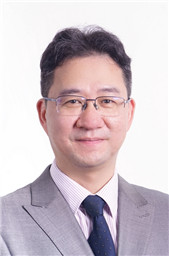
Fangfang Xu Ph.D
Academic title:Professor
Phone:021-69163667
E-mail: ffxu@mail.sic.ac.cn
Address:No.585 Heshuo Road, Shanghai
Postal Code:201899
Website:-
Resume:
Fangfang Xu is now the group leader of TEM group and vice-director of Analysis and Testing Center for Inorganic Materials in SICCAS. He was granted the talent programs from the Chinese Academy of Sciences in 2004 and the Shanghai municipality in 2006. He works on microstructures, micro-mechanism and structure-property correlations of variety of materials including structural ceramics, functional ceramics and nanomaterials by using mainly the transmission electron microscopes. He proposed a one-dimensional growth mechanism governed by spiral packing of polyhedra. He determined the doping structures of rare-earth elements in a-/b-SiAlON crystals and clarified the correlation of luminescence properties with the doping structures and microstructures. He and his team determined the atomic structures of the Cu2(S, Te) solid solutions with extremely large atomic size mismatch which showed the specific duality of crystal-glass sublattices and chemical short-range ordering. He and his team performed the comprehensive structural examinations of Cu2X (X=S,Se,Te) thermoelectric materials and correlated the observed extraordinary structures to the abnormal thermal and electrical conduction. He and his team found the ferrielectric nature of the antiferroelectric PZT, and observed for the first time the devil’s staircase phenomenon in a ferroelectric material. He and his team explained the existence of a sharp AFE-FE phase boundary on the phase diagram of PZT. He and his team investigated the effects of entropy on the crystal structures, microstructures, mechanical properties and irradiation resistance of carbide, boride and MAX-phase ceramics. He is a part-time professor of ShanghaiTech University. He serves as a vice president of Electron Microscopy Alliance of Chinese Academy of Sciences and a member of some other councils.
Main research directions:
1. material microstructures and structure-property correlations;
2. micro-mechanisms of materials’ properties;
3. development of new TEM technologies and methods;



